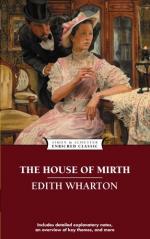|
This section contains 338 words (approx. 1 page at 400 words per page) |

|
1900: Forty-five percent of Americans live in urban centers. New York City's population rises above 1 million. Department stores, skyscrapers, public parks, and museums are all part of the new landscape of the city.
Today: In 1990, 187 million Americans, representing about 75 percent of the population, live in urban areas. Conveniences and entertainment of all sorts can be found in modern cities, from shopping malls to IMAX movie theaters to countless museums.
1900: Members of America's upper-class make up less than one-tenth of the country's population, yet they control over two-thirds of the country's wealth. The upper-class is essentially divided into two groups: old money and the nouveau riche. Members of the nouveau riche are known for their extravagance. For example, in 1897 one New York family spent close to $400,000 on a dance party. Some wealthy people, however, use their money to support social causes, giving money to art galleries...
|
This section contains 338 words (approx. 1 page at 400 words per page) |

|




